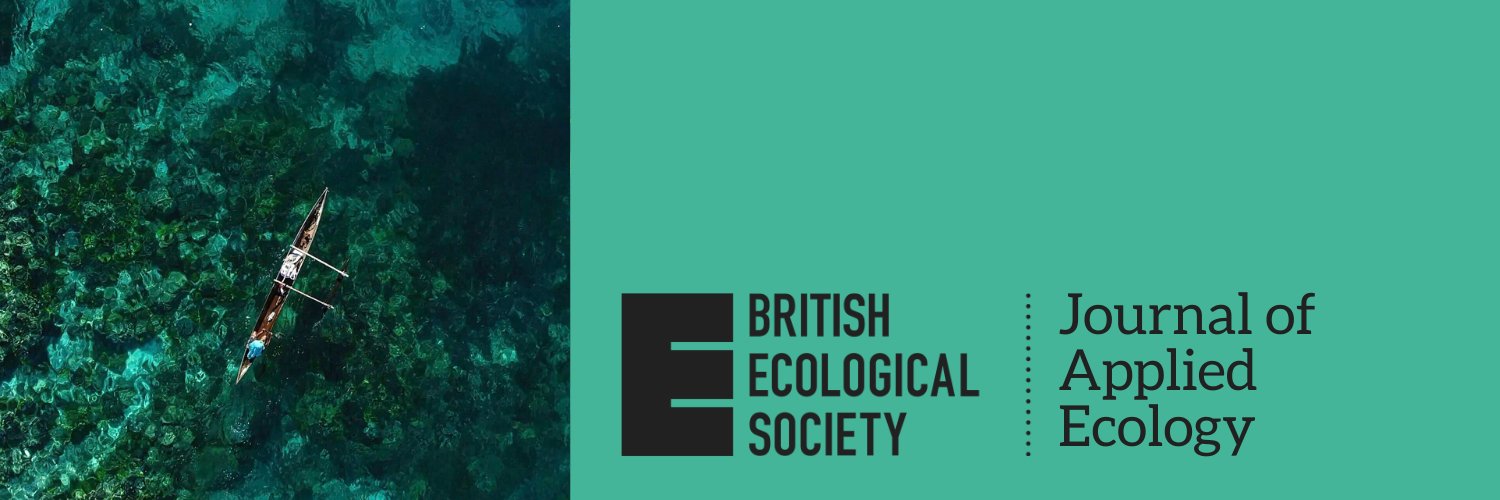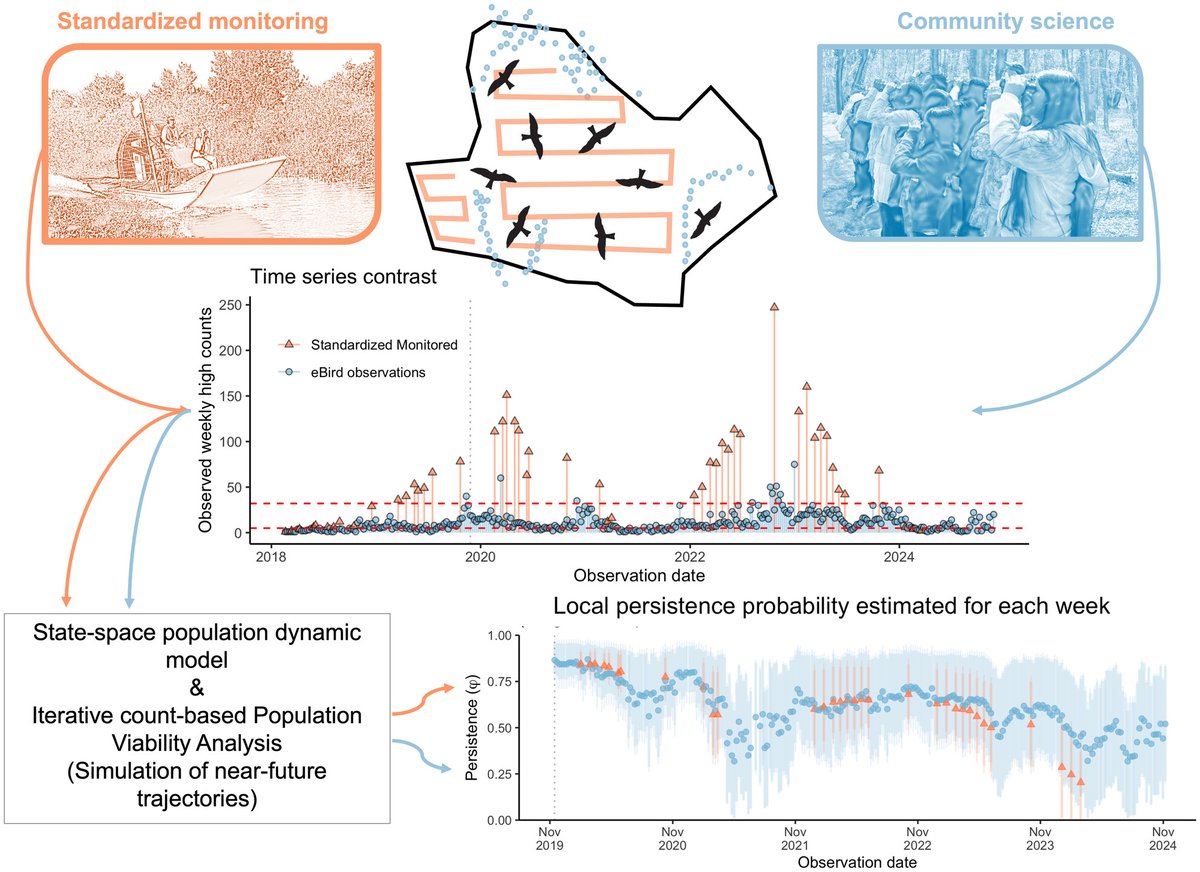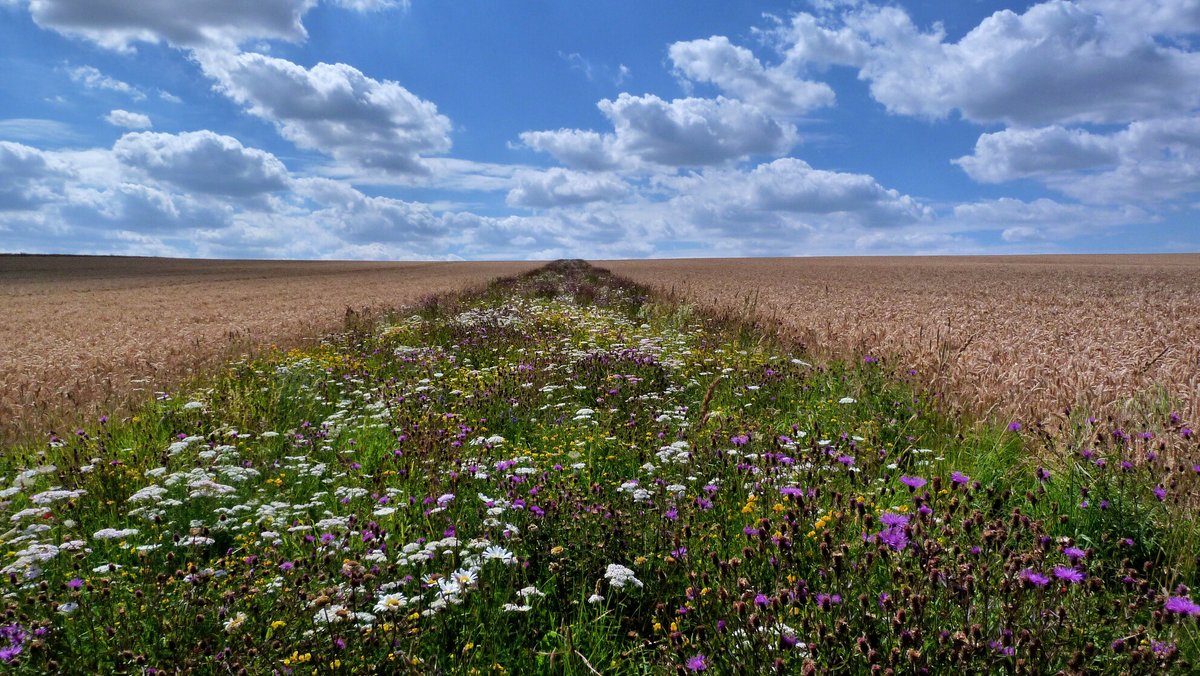
Journal of Applied Ecology
@JAppliedEcology
Driving forward the field of applied ecology through a high-quality evidence base for scientists, managers and policymakers. A @BritishEcolSoc journal
Interested in advancing understanding of the ecology and evolutionary consequences of novel communities in terrestrial, freshwater, and marine systems? 💭 Proposals for our new cross-journal Special Feature with @PaN_BES and @JEcology are now open! 👇 besjournals.onlinelibrary.wiley.com/doi/toc/10.100…

A global review of Procellariiform flight height, flight speed & nocturnal activity: Implications for offshore wind farm collision risk🌪️ Recommends mandatory flight height data collection at planned wind farms so it can be used for parameterization📊 🔗 doi.org/10.1111/1365-2…

In this blog post, Yunhui Liu and team share insights from their recent global meta-analysis on how cover crop mixtures can enhance agricultural sustainability by promoting multiple ecosystem functions 🌱💭 appliedecologistsblog.com/2025/07/24/cov…

A predictive approach to assess urban biodiversity & plan for future development scenarios Techniques can be incorporated into planning practices to achieve a more quantitative performance-based approach to enhancing biodiversity at fine spatial scales 🔗doi.org/10.1111/1365-2…

Enhanced forest-to-bog restoration speeds up peatland recovery in Scotland’s Flow Country 📈 Rigorous experiments show big gains for climate & biodiversity 🧪 @UHI_ERI @rspbscience #PeatlandRestoration 🔗 doi.org/10.1111/1365-2…

Monitoring population extinction risk with community science data 💬 Leveraging the power of people allows estimating local persistence probability as a risk-based population viability, closely aligning estimation from standardized, systematic monitoring doi.org/10.1111/1365-2…

Immersion patterns alone can predict vessel following by albatrosses 📊 Albatrosses show distinct landing and takeoff patterns when following fishing vessels. Even when vessel data are lacking, these patterns can predict vessel following 🦅 🔗 doi.org/10.1111/1365-2…
Remnant continuity forests are essential for sustaining epiphytic biodiversity in boreal production forest landscapes 🌲 Suggests that most of the epiphytic lichen occurrences represent new colonization 📈 🔗 doi.org/10.1111/1365-2…

Agroecological farming promotes yield & biodiversity but may require subsidy to be profitable 🌾 Suggests that the transition to more sustainable farming systems needs to overcome economic constraints with new policy interventions 📑 🔗 doi.org/10.1111/1365-2…

Registration for this year's @BritishEcolSoc Annual Meeting is now open! #BES2025 Below, you can find Associate Editor mentee @Ardiantiono's fantastic account of his experience attending for the first time last year! 👇 appliedecologistsblog.com/2025/07/17/bes…

New Field Diaries blog post! ✍️ In this first-person pictorial account, Apeksha Khedekar explores their time spent researching the sustainability of homestead farming among tribal populations in Goa 📸 appliedecologistsblog.com/2025/07/16/kul…

Demographic performance review of a reintroduction project: Iberian lynx in Extremadura 📑 By using insights from demography, conservation practitioners can better guide management strategies & ensure long-term viability of restored populations 📊 🔗 doi.org/10.1111/1365-2…

Restoration of native saltmarshes enhances carbon sequestration & mitigates warming effects following Spartina alterniflora removal 🌊 Suggests future restoration programmes should prioritise multifunctional outcomes 💭 🔗 doi.org/10.1111/1365-2…

Restoring free-flowing rivers: Planning for longitudinal and lateral connectivity recovery 🌊 Adequate planning should guide decision making. This includes... 👉setting clear objectives 💬 👉setting clear constraints 📑 👉using adequate data 📊 🔗 doi.org/10.1111/1365-2…

Fine-scale spatial risk models to predict avian collisions with power lines 📊 Suggest electricity delivery industries may use these models to identify the infrastructure that poses the highest risk to avian survival & prioritise mitigation efforts 🐦 🔗 doi.org/10.1111/1365-2…

Knowledge from non-English-language studies broadens contributions to conservation policy and helps to tackle bias in biodiversity data📈 Data from local sources strengthens databases by adding species not previously included in international datasets 🔗 doi.org/10.1111/1365-2…

Contrasting responses to riverine barrier modification and fish pass provision in two anadromous non-salmonid species during their spawning migrations 🐟 Weir modification improved passage rates more than fish pass installation 📊 🔗 doi.org/10.1111/1365-2…

Life-cycle impact assessment of offshore wind energy development on migrating bird diversity in the North Sea🐦 The combination of long-term bird ringing data & LCAs could be a useful tool for comparing potential impacts across proposed wind farm sites 🔗doi.org/10.1111/1365-2…

Our Special Feature with @MethodsEcolEvol is now available to read! It highlights the application of new technologies to help with pernicious applied problems, and also reflects on the promise and potential pitfalls of new emerging technologies 💡 buff.ly/dzVtFDG
Estimating abundance of aggregated populations with drones while accounting for multiple sources of errors: A case study on the mass nesting of Giant South American River Turtles 🛰️ Provides recommendations for planning surveys 🐢 🔗 doi.org/10.1111/1365-2…

Nature-friendly farming boosts both biodiversity and crop yields — but scaling it up may need more government subsidies to become as profitable as intensive agriculture, a new study has found ceh.ac.uk/press/nature-f… 🧵 1/